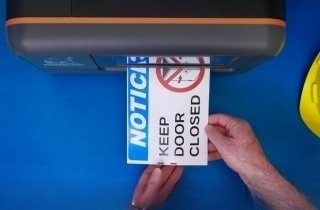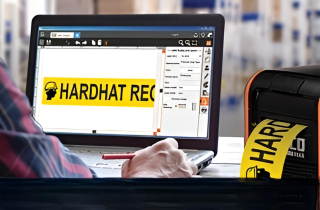Calculating Overall Equipment Effectiveness (OEE)

What Is Overall Equipment Effectiveness and How Is It Calculated?
Overall Equipment Effectiveness (OEE) is a foundational metric in Lean systems used to measure manufacturing efficiency. By tracking availability, performance, and quality, OEE helps identify bottlenecks and waste, enabling targeted improvements. Developed by Seiichi Nakajima, this Lean manufacturing term is also applicable to Six Sigma and 5S Methodologies, establishing a routine for evaluating the effectiveness of each step in the manufacturing process.
To give you an idea of how the scoring works: A score of 100% is perfect production, a score of 85% is world class for manufacturers, a score of 60% is fairly typical, and a score of 40% is not uncommon for manufacturers that don't practice lean techniques (TPM - Total Productive Maintenance). Calculating OEE will help your company identify where to improve quality, where to maximize your existing resources and reduce waste-saving you money in the long run.
Here is a hypothetical example: A tire manufacturing plant recently adopted Kaizen, a lean process of continuous improvement. Once Kaizen was fully implemented every employee is now motivated to evaluate the steps in their job function in order to improve efficiency.
Employees noticed that for every 100 tires produced on the manufacturing line; there is a group of 12-14 tires that end up with treads cut incorrectly. Before Kaizen was implemented, employees counted those tires as defective, assuming it was a usual margin of error.
Because all employees now look for ways to continually improve the process, OEE is used to go back to assess each step in the tire manufacturing process to determine where improvements could be made. A timing issue was found in one step of the process where a machine would reset for an extra four minutes while tires continued to move through the line. This caused a small batch every 90 minutes to cut tires incorrectly. By using OEE, it was determined to slow the manufacturing line for those 4 minutes. This adjustment increased the quality rate, reducing waste.
The decision to upgrade a specific machine was decided upon using the OEE Calculation.
*OEE Calculation is based on three factors; Availability (A), Performance (P), and Quality (Q). How is each one calculated?
Availability: How to Measure Downtime Loss
Availability considers Down Time Loss.
A= Operating Time / Planned Production Time
Example: A conveyor system is scheduled to run for two 8-hour (960 minute) shifts, with a 30-minute break per 8 hours.
Operating time = 900 min scheduled - 90 min unscheduled downtime = 810 minutes
Calculation: Availability = Operating time / Planned Production Time
Availability 810 minutes / 900 = 90%
Performance: Calculating Production Speed
Performance considers Speed Loss
P = Ideal Cycle Time / (Operating Time/Total Pieces)
Ideal Cycle Time is the minimum cycle time that your process can be expected to achieve in optimal circumstances. It is sometimes called Design Cycle Time, Theoretical Cycle Time or Nameplate Capacity.
Example: A conveyor system is scheduled to run for two 8-hour (960 minute) shifts, with a 30-minute break per 8 hours.
Operating time = 900 min scheduled - 90 min unscheduled downtime = 810 minutes
Parts are produced at the Standard Rate of 40 units/hour or 1.5 minutes per unit
The conveyor system produces 525 units during the total day. This is Total Units, not Good Units. Quality is not measured at this point.
Calculation: Performance = Ideal Cycle Time / (Operating Time of Total Pieces)
Time to produce parts = 525 * 1.5 minutes/unit = 787 minutes (Ideal Cycle Time)
Performance (Productivity) = 787 / 810 = 97%
Quality: Identifying Output Loss
Quality considers Quality Loss, and is calculated as:
Q = Good Pieces/ Total Pieces
Example: 525 units are produced. 56 are defective.
(525 units produced - 39 defective units) = 469 units
469 good units / 525 total units produced = 89%
Calculating OEE: Availability x Performance x Quality
OEE considers all three OEE Factors, and is calculated as:
OEE = Availability x Performance x Quality
*Calculation formula taken from www.oee.com. Examples are hypothetical.
Using OEE in Lean and Six Sigma Systems
Using OEE is not an absolute measure; it can break down in various areas. It's best used to identify problem areas that will take further analysis for key performance improvement. From manual, semi-automatic, to fully automatic operations or processes, implementing OEE tools as part of your lean manufacturing protocol will improve performance for any process in your workplace.
Take Action Today
Need help with OEE improvement strategies? Call us at 1-888-788-9936 to see how DuraLabel supports your efforts in measuring OEE in Lean environments using visual systems and Lean labeling tools.
Learn about our recommended best practices in the Kaizen and PDCA Best Practice Guide where we provide actionable advice on improving your organizations productivity and safety.
Related Resources

Continuous Improvement Ideas for the Workplace
Success in today's competitive market requires constant innovation and a vision focused on continuous ...
Read
Visual Workplace and Lean Manufacturing
What Is a Visual Workplace and How Does It Support Lean? Thevisual workplace in Leanmanufacturing uses ...
Read
Value Stream Mapping in Lean Manufacturing
What is Value Stream Mapping? Value stream mapping is a lean manufacturing technique that follows the ...
Read.png)





